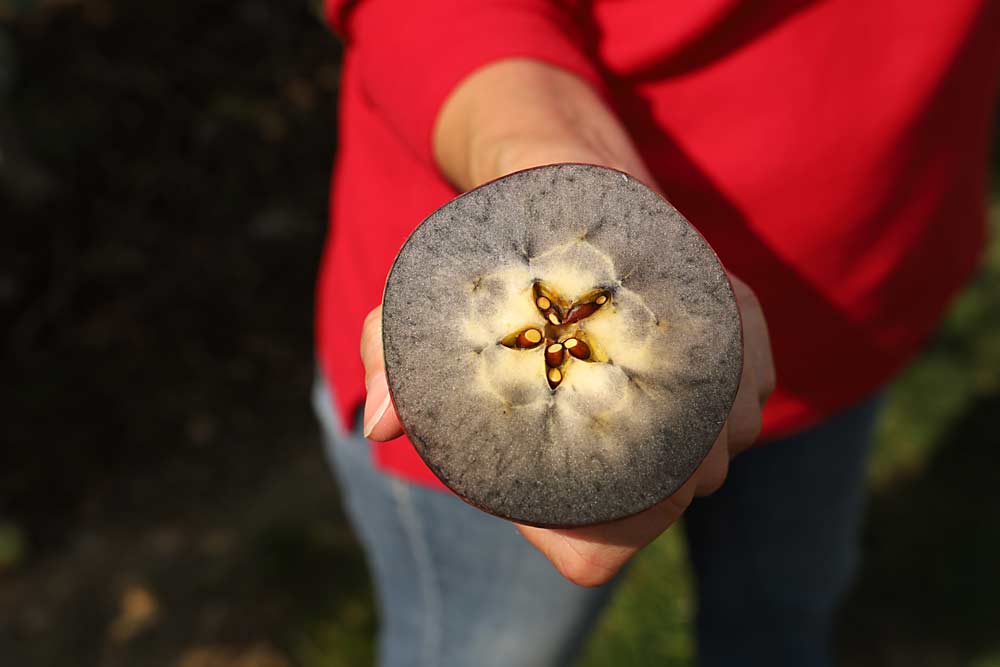
Washington growers expect to wait at least another month to begin harvesting WA 38, as the season continues to run 10–14 days behind normal, according to growers who opened their orchards to a preharvest tour organized by Washington State University on Sept. 15.
Waiting for fruit to show significant starch clearing — as indicated by a 2.0 on the variety-specific scale developed by the Washington Tree Fruit Research Commission — is key to getting the flavor that consumers will want to come back for, said Kevin Brandt of Proprietary Variety Management, which manages the Cosmic Crisp program on behalf of WSU.
“Picking green fruit isn’t going to work,” he said at the field day. Fruit that was picked too early last year is still showing a green background and has come out of storage almost a year later still green, he added.
Updated harvest and storage guidelines for WA 38 are available from WSU at: treefruit.wsu.edu/article/2022-commercial-harvest-and-storage-criteria.
Across several field day stops, WSU scientists shared their ongoing research efforts into the optimum rootstocks for WA 38, whether plant growth regulators may be able to boost fruit retention for the self-thinning variety, and training approaches to set up young trees for successful future cropping.
On the latter point, Stefano Musacchi, endowed chair for tree fruit physiology, introduced growers to a recent research planting he intends to use to demonstrate how different training approaches in young trees impact production over the years to come. Even in the first year, the difference in blind wood development between the trees pruned with stub cuts, also referred to as click pruning, and those left with longer branches was quite apparent.
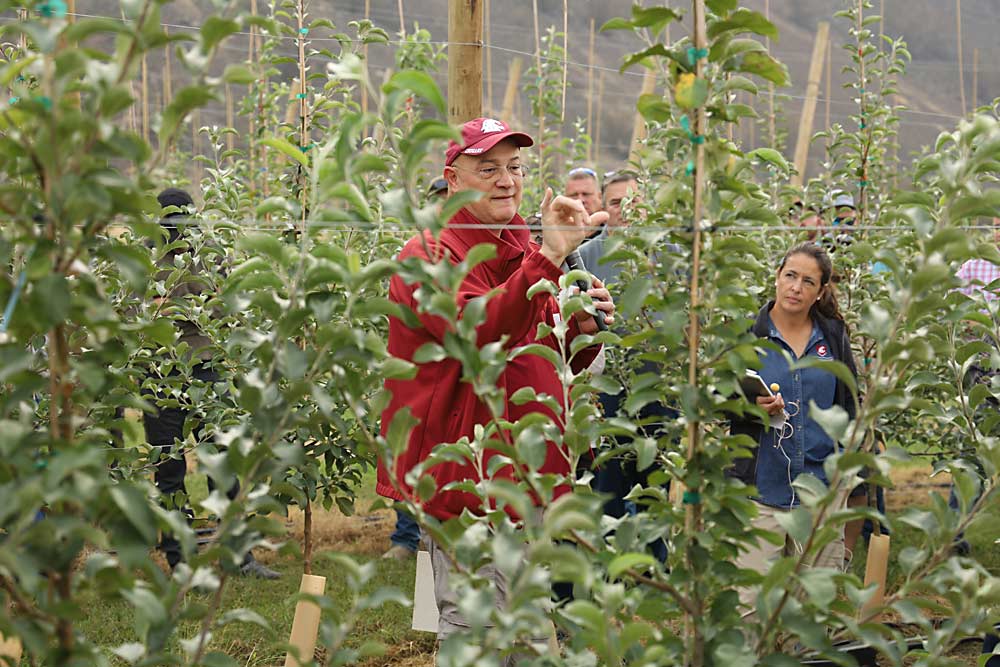
At an orchard owned by McDougall and Sons, Musacchi pointed out how the same approach has helped in a fourth-leaf orchard.
“The trees look really nice now because I see the new wood,” he said. “This is a variety where you need to build the tree first, like you are doing, and then you load it.”
Grower Scott McDougall asked Musacchi how much of a crop load he thinks WA 38 can handle year over year while maintaining fruit quality, return bloom and renewal.
Sixty to 90 bins per acre is feasible, Musacchi said, adding that the challenge is that with WA 38’s tendency to self-thin, it’s hard to know if the trees will end up with 60 or 90. But experience is starting to show that growers can do 90 without sacrificing quality.
The tour also visited a commercial block in the fifth leaf that did crop 90 bins per acre last year, and it packed out over 90 percent of that as premium quality, according to Monument Hill’s managers. They brought apples from the block that had just come out of storage and shared them with the tour. This year, they estimated the block at 75 bins per acre, but hail damage was going to send the entire crop to processing, said Tom Gausman of management company AgriMACS.
“If we can bounce around those 75 to 90 numbers, that would be great,” he said.
One thing that might help growers sustain yields, with less biennial fluctuation, is rootstocks, according to Lee Kalcsits, WSU endowed chair for tree fruit environmental physiology. He introduced the tour to a rootstock trial hosted in a Stemilt Growers’ block primarily featuring not-yet-commercial selections from the Geneva breeding program.
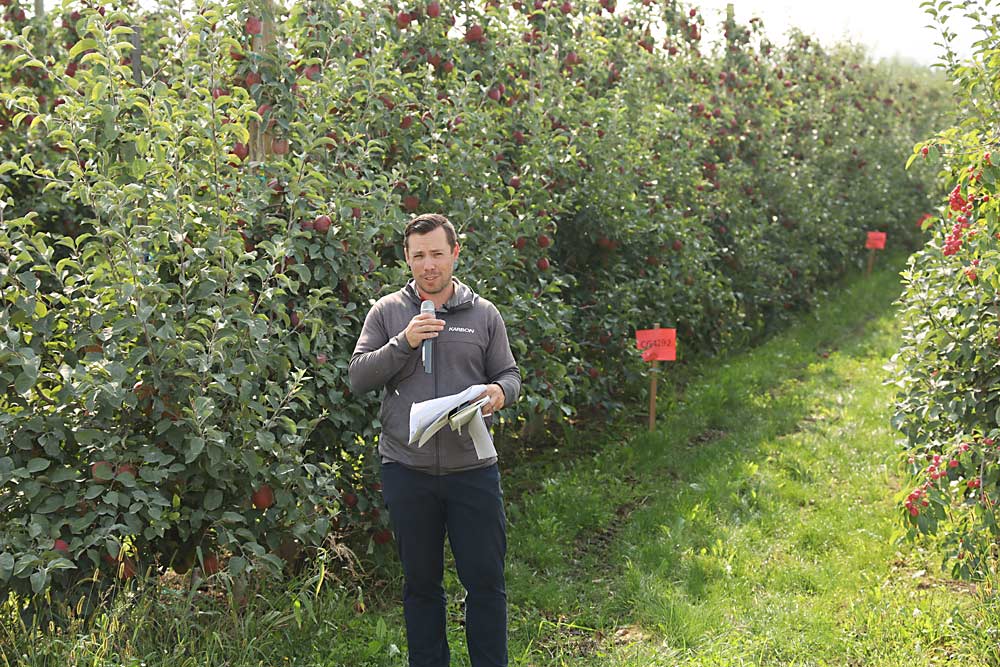
The 2017 planting cropped 70 bins per acre in its fourth leaf in 2020, Kalcsits said, but dropped to an average of 52 bins per acre last year. This year, it appears to be in the 70- to 80-bin range. While the trees on G.41 — the industry mainstay — showed a 40 percent reduction between 2020 and 2021, two new Geneva selections stayed almost consistent.
That’s a promising finding, but for now, growers need to manage the trees they already have in the ground. According to Brandt, there are now 20 million WA 38 planted in the state, although nurseries report that orders are slowing down significantly.
—by Kate Prengaman

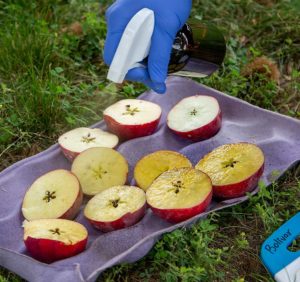
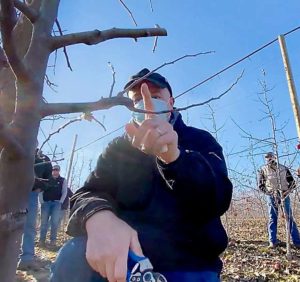





Leave A Comment